The face of the water, in time, became a wonderful book… and it was not a book to be read once and thrown aside, for it had a new story to tell every day. –Mark Twain
My face no longer has the roundness and smooth silkiness of youth. Gone is the brightness of eye and cheek that glowed in young adulthood. The perpetual optimism of my smiling lips has waned a bit, and my braces-straightened teeth have slipped back to some crookedness. The smile lines are etched into my skin, no longer disappearing with my smile, as are the worry lines between my brows. My face reveals the story of my life, unabashed by the sorrows and joys that have ravaged and lit up the cells of my countenance.
We went to Mark Twain’s river, though much farther north of his Hannibal, Missouri home, farther north than our home close to the same river, up to Crow Wing State Park. The last time we were there was mid-March, when Covid was beginning to shut things down, when snow was still piled around the picnic tables, and ice still covered the Mississippi. Now, the tannin-rich water reflected the blue of a clear summer sky, and lazy ripples formed the features of its face.
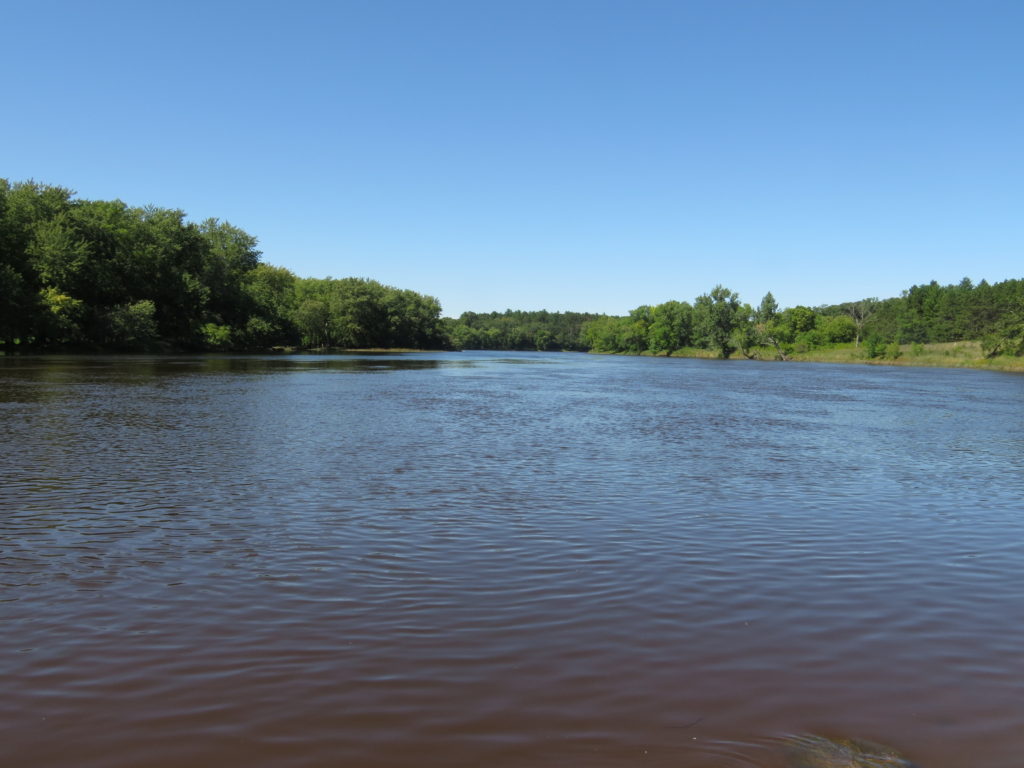
Speckled leaf-shadows lead to a rock in the River. It was just big enough to catch the river and add lines to the shore-bound water, reflecting agate-like on the face of the rock.
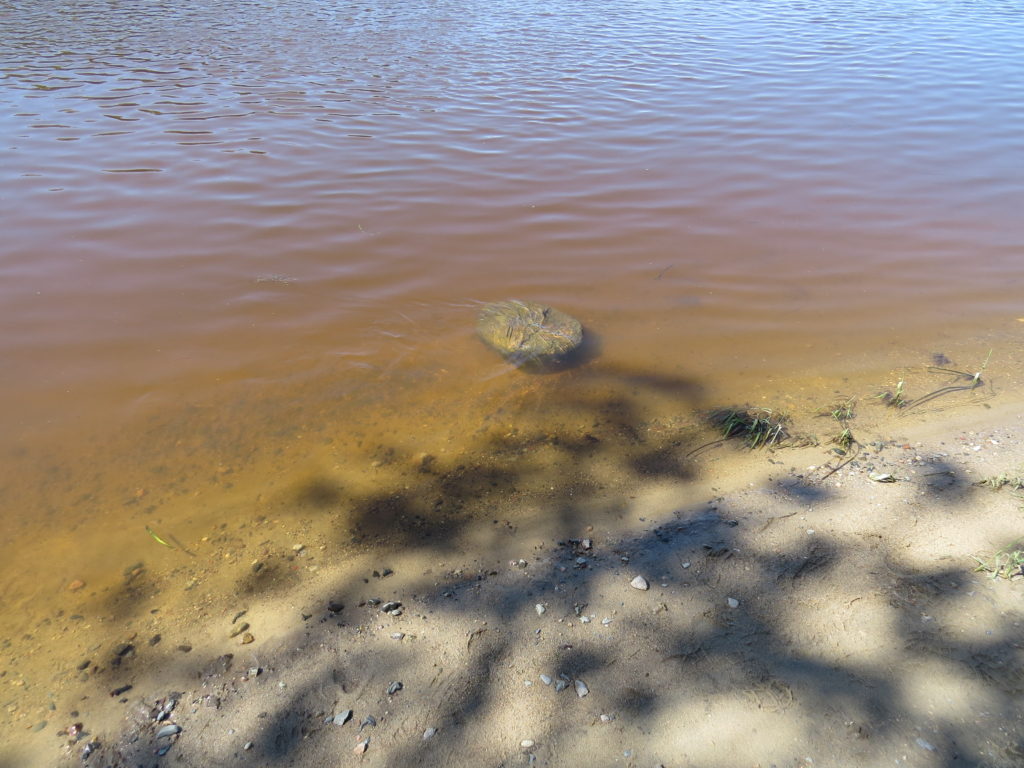
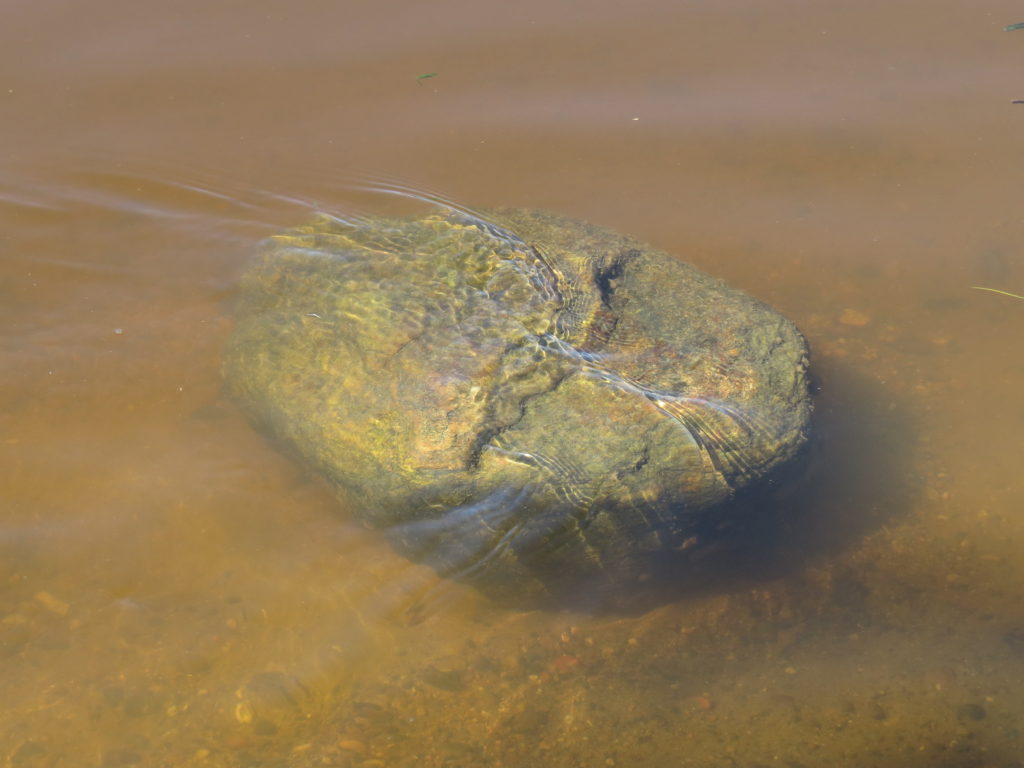
Wild Turkey tracks were dug into the wet sand alongside the human kind. What story do they tell?
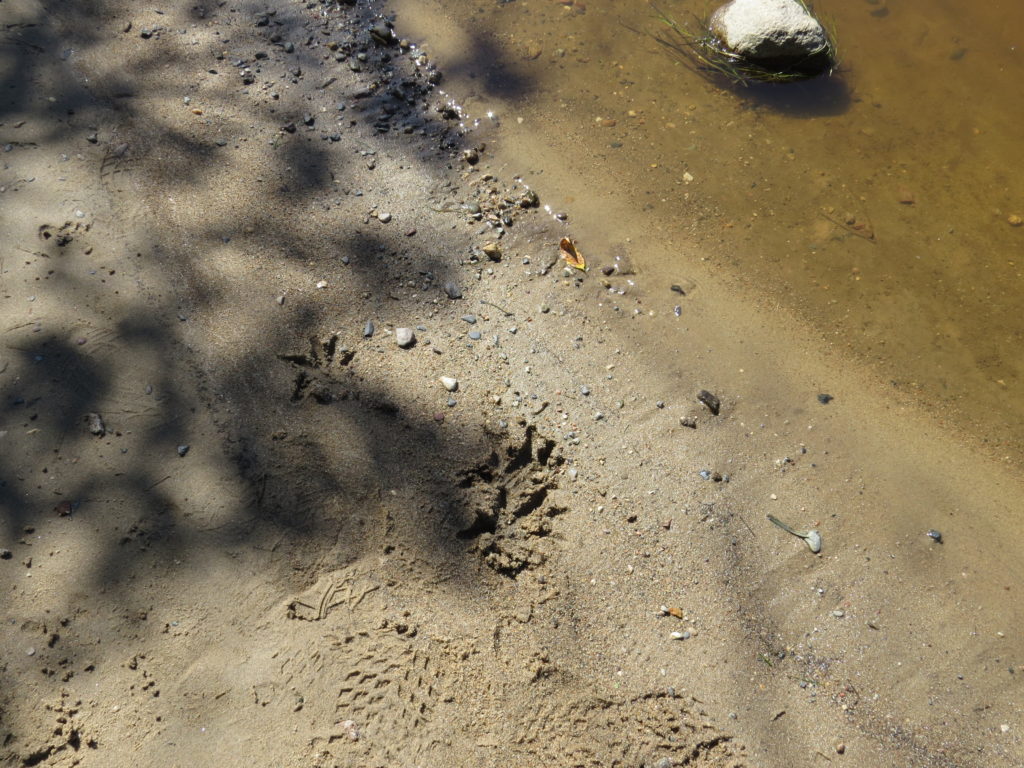
Prairie grasses and wildflowers grew tall between the trail and the River, obscuring a good look at the Mississippi. We knew it was there. Glimpses of blue came through in the background. But the Indian Grass and purple Asters grabbed our attention.
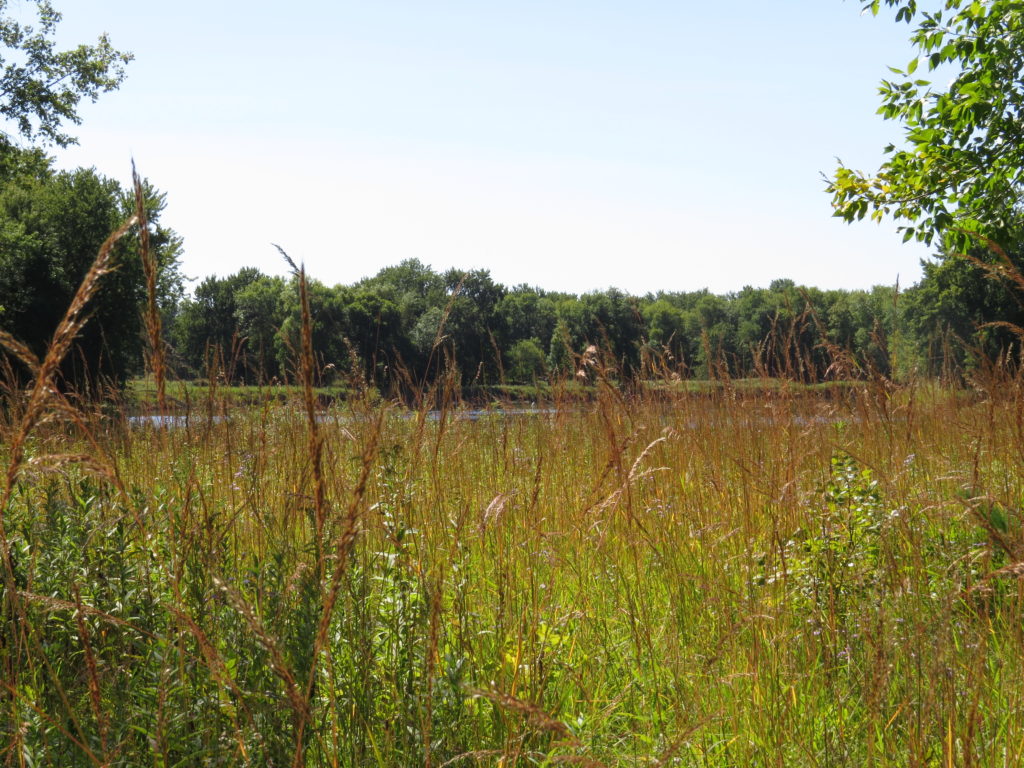
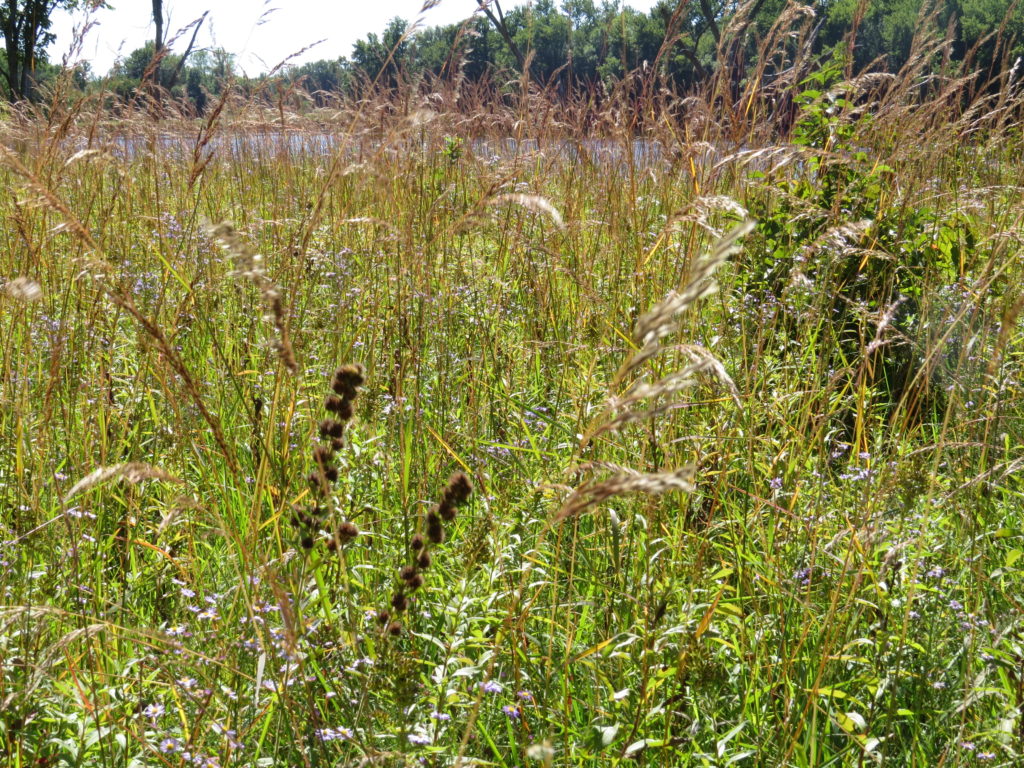
We followed the Red River Oxcart Trail along the point of land the River curved around to Chippewa Lookout. Tall Pines framed the view of the Great River—until it disappeared around the bend. What lies beyond our sight? What does the next page tell us?
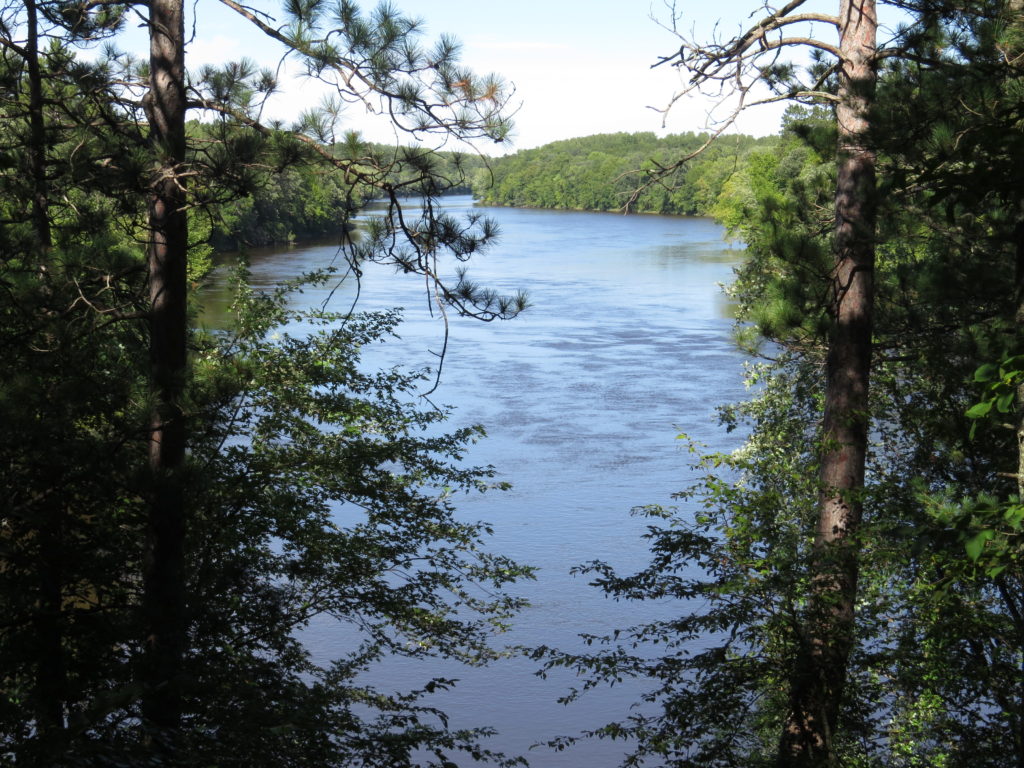
The water shows us a reflection of the grasses, the trees, and the sky; though it gives us a view of the environment, it is not ‘true’ to form. Wind and rain can distort the reflections—a re-telling of the story of the surrounding flora and firmament.
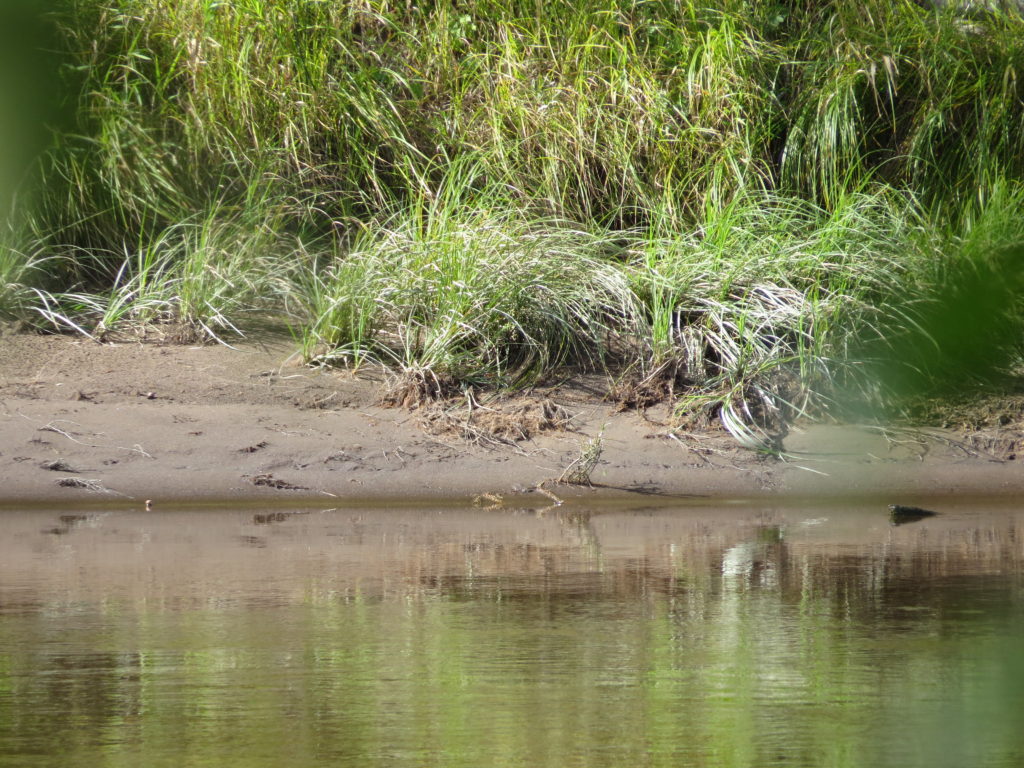
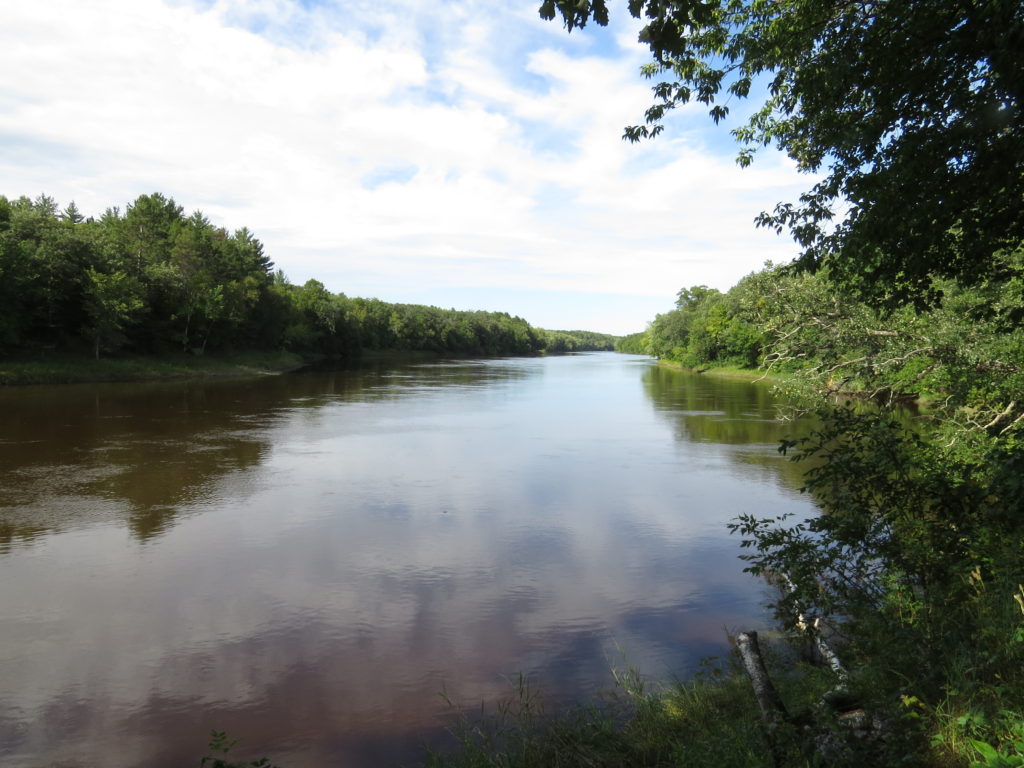
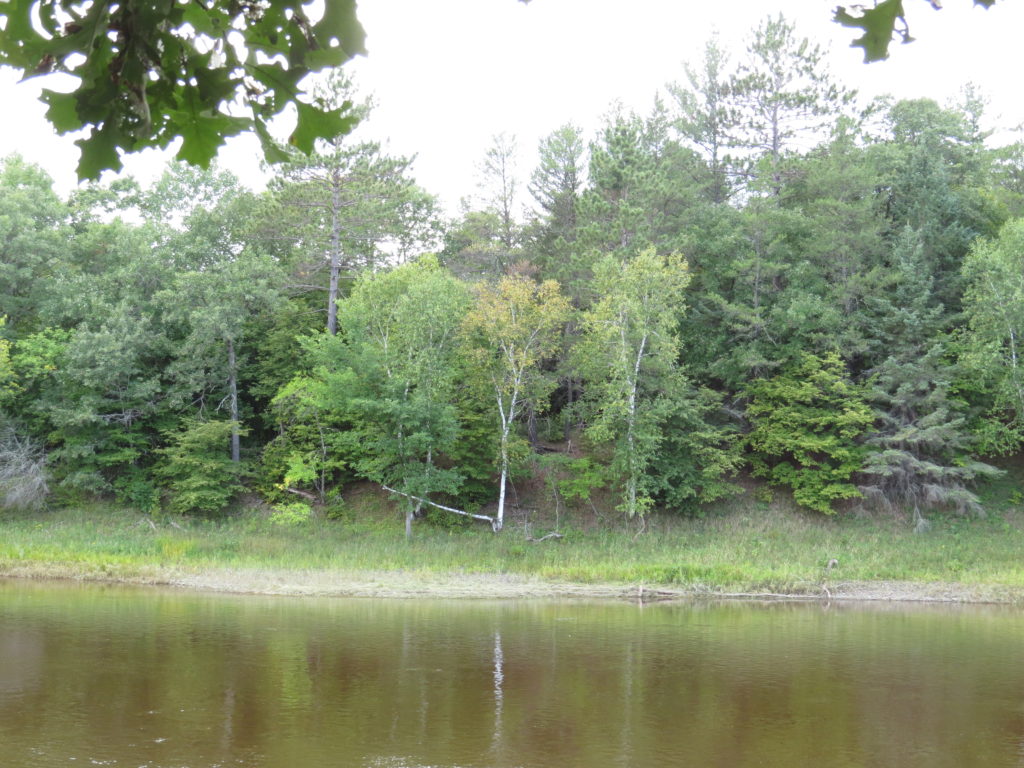
The face of the water is background to a wide array of characters, like Sneezeweed, Red Pines, Birch trees, and Ash. The characters grow and change and have stories of their own. Sneezeweed (Helenium autumnale) is an aster, a late summer- and fall-blooming plant who likes to grow in sunny swamps and beside water. The story of its common name? Its dried leaves were once used as ‘snuff’ and induced sneezing.
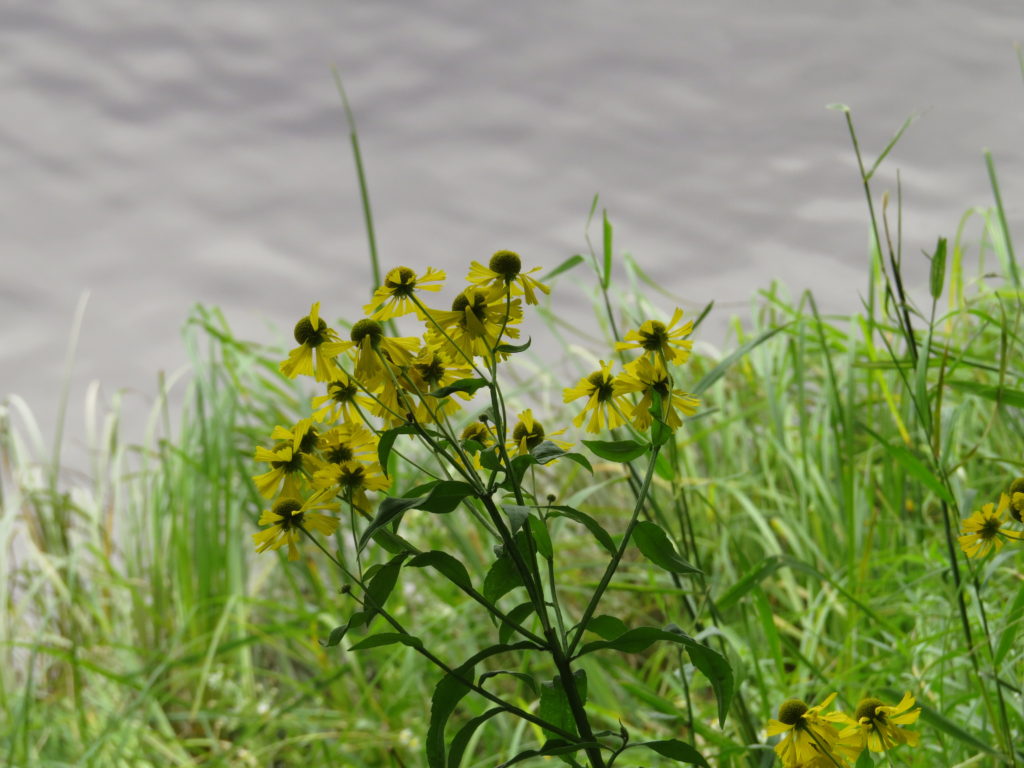
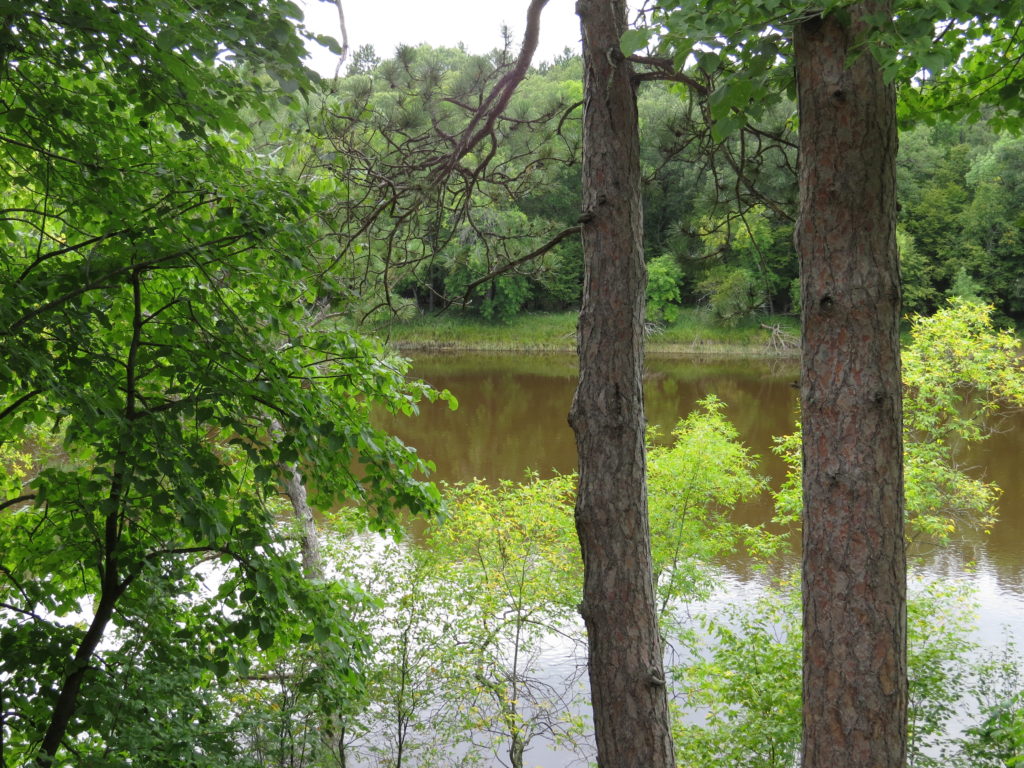
I never tire of the River—or the woods—or the prairie. Like Mark Twain said, it is not a book to be read once and tossed aside. It has a new story to tell every day, every hour even. We are the main character in our own stories. Many things distort or cover up the true chronicle of our lives; it’s hard to shake out the plot—the burdensome details and less relevant characters get in our way. Our reflections often do not show our true selves. In other words, our stories are messy. They obfuscate our purpose. And yet, isn’t that what a good book does? What if the writing, the reading, the living of the book of our lives is exactly the right thing, messes and all? What if our reflections are actually more beautiful than what we see? My face, with time, has many stories, many chapters. With time, I have accepted the lines, the less-than-perfectly-straight teeth, the worn look of my eyes. In fact, I love it now. I look at my face and appreciate the sorrows and joys that have left their marks, underlining and highlighting those impactful moments. With time, my face has become a wonderful book. I wonder what new story is on the next page?
Leave a Reply